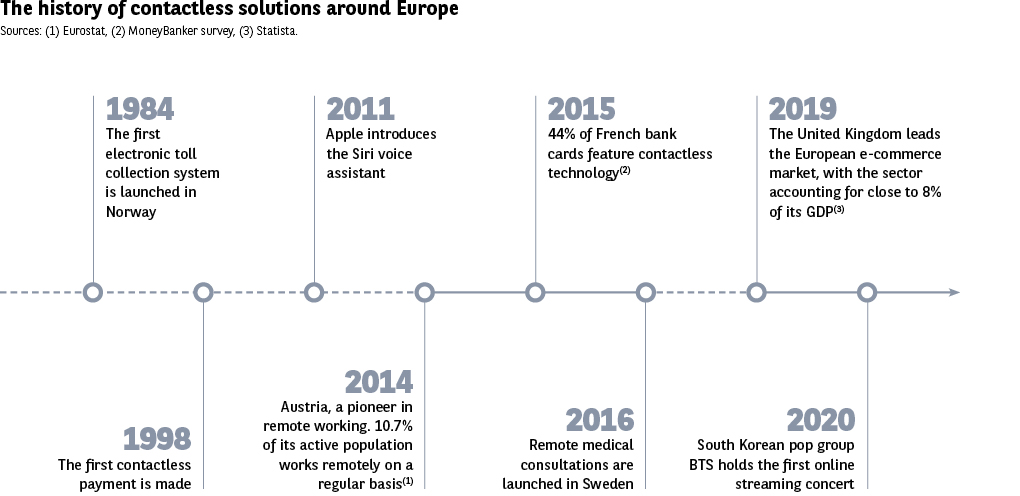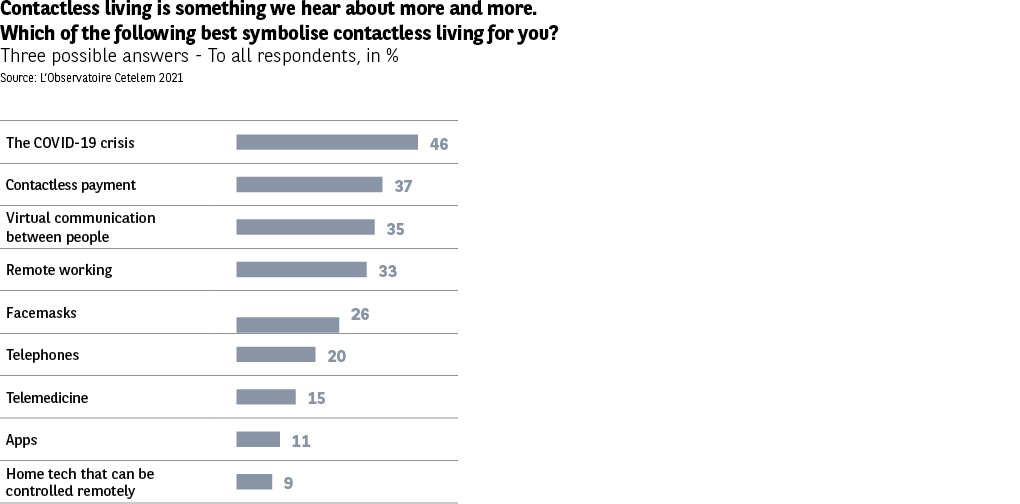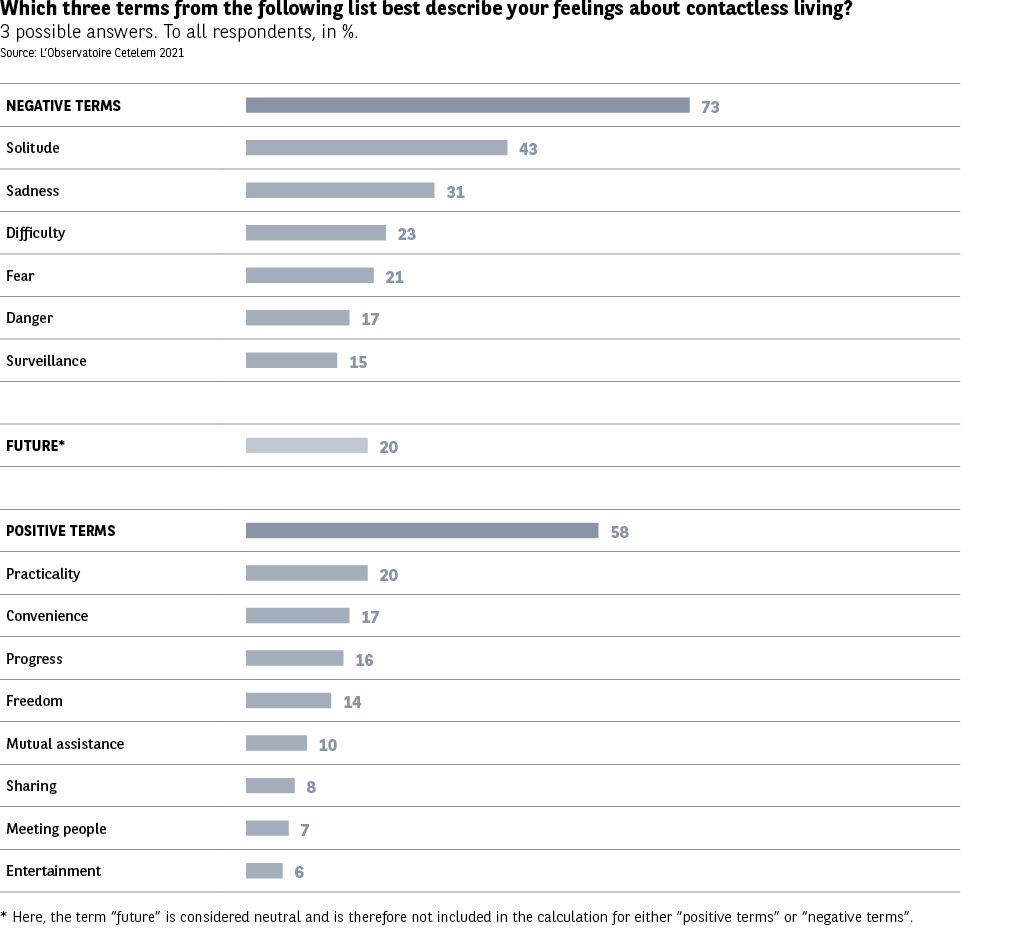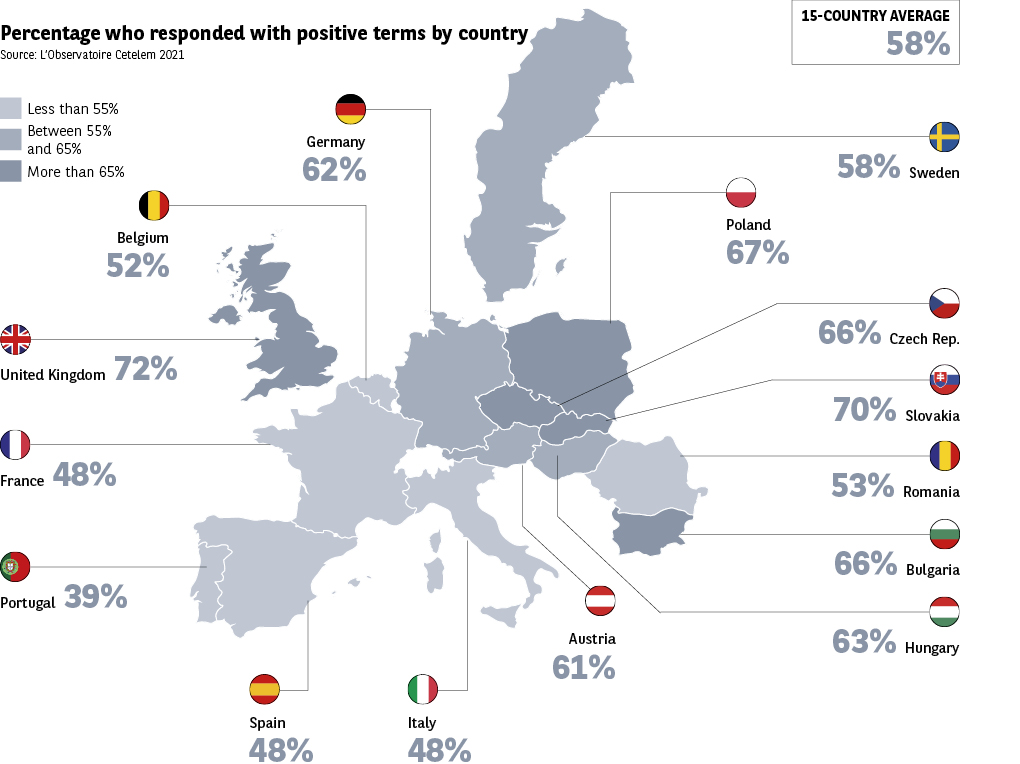A manifold, tangible and geographically dependent reality
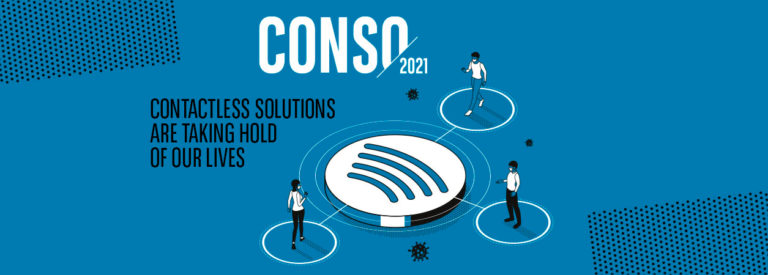

If one were to list all the applications and practices that fall into the contactless category, the result would apparently contain many surprises. Because although it is most famously symbolised by its use in payment systems, contactless technology is everywhere in our lives and sometimes so discreet that we completely forget about it.
Almost 40 years of contactless solutions
Whether it be electronic toll collection and parking, magnetic keys, travel and cinema passes, ski lift passes, payment cards or voice assistants, contactless solutions have been part of our lives for some time now, to the point where we barely notice their presence anymore (Fig. 13). Although a cordless phone was used to make a call for the first time in 1973, it was in the 1980s that the first contactless “tool” saw the light of day. This was an electronic toll collection system set up in Norway. In 1989, Italy installed the system across its road network.
Contactless technology was next used a few years later, again in the transport sector. In 1997, travellers in Hong Kong were able to use this type of system on the city’s public transport network. 1998 was the year in which the technology really came of age. South Korea was where the first payment was made using a contactless card. It wasn’t until 2005 that an initial six-month trial was held in France, in the city of Caen, which involved shops that accepted the Cofinoga card.
Contactless technology, a key part of daily life symbolised by Covid-19
When Europeans are asked a little over a year after the health crisis was first triggered, there is no doubt about what they think best embodies these solutions. Indeed, according to 1 in 2 Europeans, and in nearly every country surveyed, Covid-19 best symbolises this way of life (Fig. 14). Measures such as lockdowns, curfews and social distancing have all had a part to play in this, putting distances between people that can be measured in meters at the very least. Such has been the severity of the crisis, one might have expected this score to be even higher. The Portuguese and Italians are the most likely to associate contactless solutions with Covid-19 (62% and 60%). Only three nations fail to place it in the top three answers given: the Czech Republic (33%), Slovakia (35 %) and the United Kingdom (37 %).
A relatively reasonable distance behind, in second place, is contactless payment, which is cited by 37% of Europeans, with significant differences from one country to the next. The Italians and Portuguese are again of a similar mind, mentioning this example in very few cases (13% and 19%). The Hungarians and British view it as the very epitome of contactless living (62% and 61%).
The next two items on the list also highlight the role of the health crisis in heightening awareness of contactless technology. Indeed, virtual communication and remote working are cited in 35% and 33% of cases respectively. As we will discuss later, both of these practices have developed rapidly over recent months. The Austrians even place virtual communication at the top of the list (49%). Meanwhile, the Poles and Bulgarians are most likely to cite remote working (58% and 53%).
Another symbol of contactless living in the Covid-19 era is the use of facemasks, which is mentioned by 1 in 4 Europeans. The Swedes, to whom facemasks were recommended no earlier than 18 December 2020, only cite this example in 7% of cases.
Telephones, telemedicine, apps and home tech are mentioned by 20% of respondents or less.
A source of mixed feelings
The impact of contactless solutions on our lives is not just practical in nature. Europeans tell us that it is also psychological and generates mixed feelings. 73% of those surveyed associate contactless living with at least one negative term, while only 58% associate it with a positive term (Fig. 15). One word in particular stands out from the rest: solitude. It tops the list with 43%, proof of the distance that has grown between people and which has only been exacerbated by Covid-19. In every country covered by the survey, except for Hungary, where the watchword is danger, solitude is mentioned most frequently, as is also the case in Belgium, Portugal, France and Sweden, where it is selected by more than one in two respondents.
It is followed by three other negative terms that Europeans associate with contactless living: sadness, difficulty and fear (31%, 23% and 21%). The first of these is again most likely to be felt in Portugal and France, but it also ranks high in Spain and Romania. The Italians and Romanians attest to the difficulty involved in contactless living. The Portuguese, Spanish and Hungarians speak of the fear it engenders.
And yet, there is no lack of positive opinions either. Indeed, 58% of the terms associated with contactless living are positive. Topping the list is “practicality”, which is mentioned in 20% of cases (5th place out of all the terms suggested). However, the opinion that it is practical is far from being universally held. While 32% of Britons and Bulgarians opt for this term, this is only true for 4% of Portuguese respondents.
The next three terms in the ranking are convenience, progress and freedom (17%, 16% and 14%). Here again, there are many disparities from country to country. The Poles believe contactless living is easy (30%). The Bulgarians contest this view (11%), much like the Portuguese and Spanish.
It is synonymous with progress in the eyes of Slovaks (25%) and according to the Central European countries as a whole. The Italians (8%), Portuguese and Swedes (9%) disagree quite strongly. The score attained by the freedom it procures ranges from 11% to 20%. (Fig. 16)
43% of Europeans associate contactless living with the word “solitude”
3 groups with 3 experiences of contactless living
What these results implicitly suggest is that the way in which people engage in and perceive contactless living depends on a variety of factors, such as the maturity of its uses, culture and economic power. And if we try to interpret the results through the prism of these three key considerations, three geographical groups emerge whose respective members share more or less the same views on contactless living. Three groups keep reappearing when we study consumption.
The first group comprises countries located in Northern Europe, which share a degree of maturity vis-à-vis contactless technologies, having already grown familiar with them over the years, but also as a result of their Anglo-Saxon culture and relative economic prosperity. The United Kingdom, Sweden and Germany are its flag bearers, to which one must add Austria.
The second group takes us to Southern Europe and Latin nations with shared Mediterranean roots, predominantly Catholic sensibilities and an economic climate that can be a little more unstable. Individuals in this group frequently associate contactless solutions with positive terms and believe that they have not been in use for as long as respondents from many other countries.
The third group is comprised of Eastern European countries, where opinions on contactless solutions are more evenly balanced between the positive and the negative. These are countries that were already using contactless technologies, but which have also seen them develop rapidly in recent years. One example of this sudden growth is Poland, where contactless transactions leapt from 33% of the total in 2014 to 80% in 2018 (source: Visa card survey, 2018).

